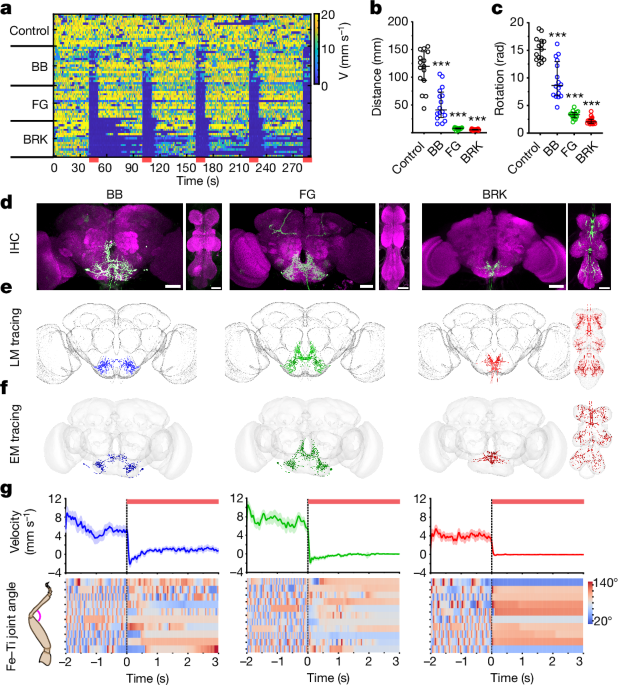Neuromythography is partly about doing something systematically that biologists naturally do whimsically.
Biologists have named some of the classes of Drosophila fruit fly neurons. Names like tulip, oink, oikT, and cantaloupe.

In a recent Nature study, researchers identified two "mechanisms" that govern Drosophila fruit fly motor programs that they called "walk-OFF" and "brake". When they got down to the neuron level, these behaviors emerged from circuits involving particular neurons, which they named:
Foxglove (FG)
Bluebell (BB)
Brake (BRK)
The researchers were able to distinguish the three neuron classes:
To summarize, we found that (1) BRK suppresses all walking commands, (2) FG specifically suppresses forward walking components of P9 and BPN (partially) and (3) BB predominantly suppresses forward turning induced by P9. The diversity in these walk–halt interactions suggests that the neural targets and mechanisms deployed by the three halting pathways (FG, BB, BRK) are at least partially distinct.
Ok. Brake brakes, Foxglove suppresses forward walking, and Bluebell suppresses forward turning. Let's try to give them better names using the inventor domain:
Foxglove: Arthur Compton invented speed bumps, which slow down drivers
Bluebell: James Winner invented the steering wheel lock known as The Club.
Brake: Sol Seidman invented the parking brake.
If we want to rewrite this study as a myth, we have
In Drosophila walking control
Compton slowed down forward movement
Winner locked the steering wheel
Seidman locked the fly in place
Clearly these names are an improvement, and start to create a mythography of the Drosophila fruit fly brain.
Here is the study:





